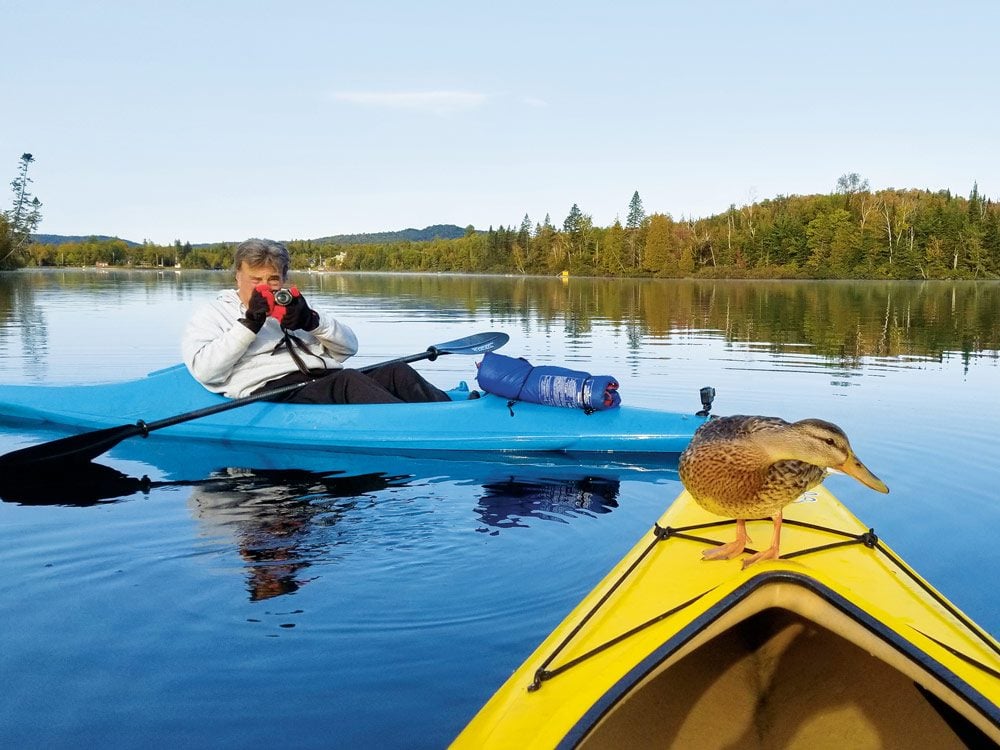
Kayaking in the Laurentians
The morning silence was shattered by the echoing sound of the call of a loon. I had been fast asleep, but knew I now had to drag my body out of bed to visit with my friends.
I am fortunate enough to have a house on a lake in the Laurentians, an area with small mountains and lakes about an hour north of Montreal. I spend as much time there as possible, particularly in the warmer months when my kayak becomes my favourite mode of transportation. I have a very stable kayak that allows me to bring my camera with me without fear of it falling into the water.
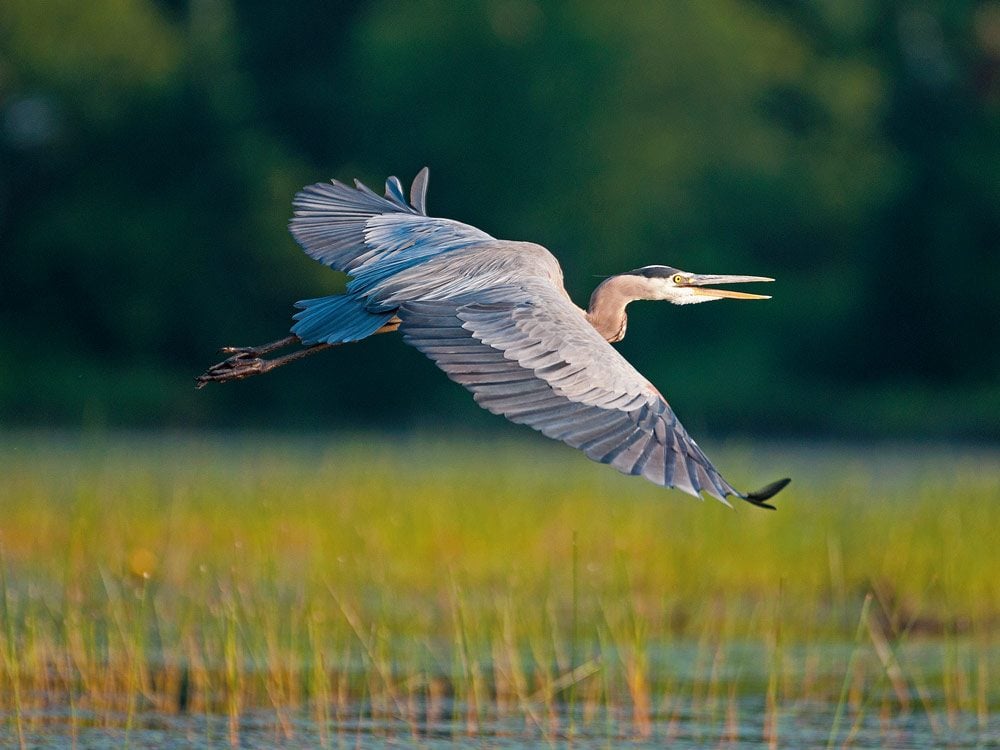
A network of spotters
Photographing from a kayak takes careful practice, but once mastered, becomes second nature. My camera must be ready at all times as nature is often fast moving, giving me a very short window to capture the essence of the moment. It also helps to have a network of spotters on the lake, other kayakers who know of my love of nature and point out sights they may have spotted that morning.
The first set of arrivals every spring tend to be mergansers and other varieties of colourful ducks passing through on their way to their summer homes. A local tip led me to an area where there is a great blue heron rookery. This is a somewhat isolated area with around 10 to 12 nests high up in dead trees. I was able to find a spot on top of a hill that gave me a bird’s eye view of the nests. In spring, the herons are busy repairing their nests, followed by warming the eggs and then feeding the little ones.
Check out these beautiful Canadian birds photographed by our contributors.
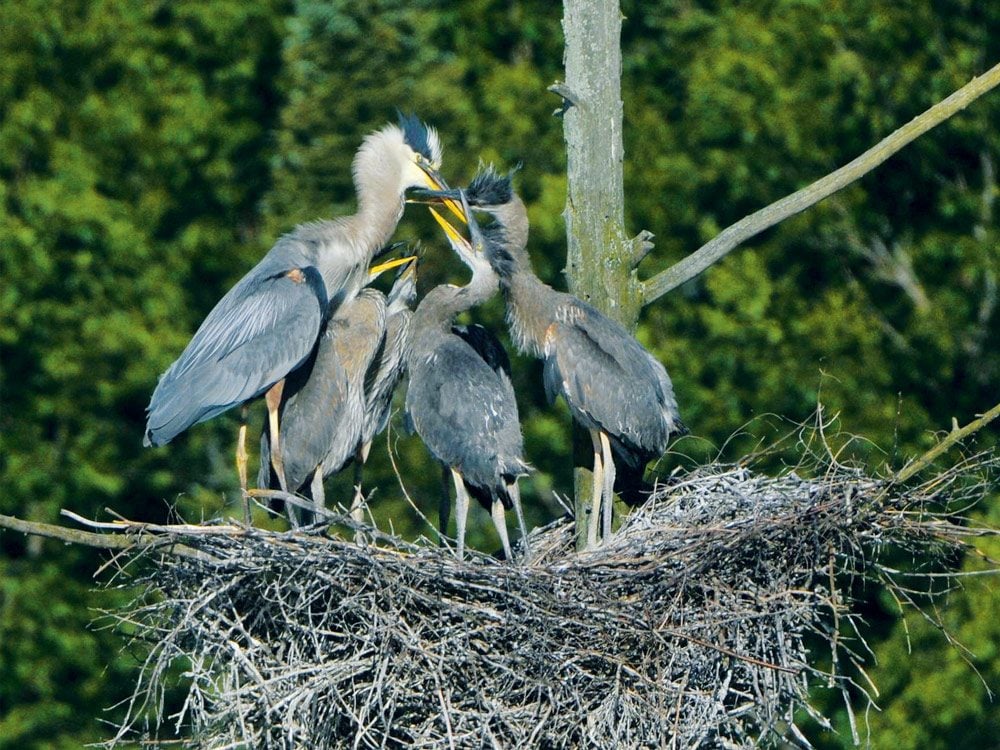
Feeding frenzy
Great blue herons typically nest in colonies, called heronries. A heronry may have anywhere from five to 500 breeding pairs. They build large platform nests high in trees. They may also use nesting platforms. Two to six eggs are laid, and incubation lasts about 28 days. It is a fascinating sight, though sometimes gut-wrenching to see how it is survival of the fittest. When the parent comes in to feed, there is a mass frenzy and often there is a single, weaker baby left out. One year, I saw that one of the babies was either kicked out of the nest or fell out and was stuck on a lower branch by itself, unlikely to survive on its own.
The same is true for mergansers and other ducks. I’ve often seen them in early summer with a troupe of 12 babies and watched how this number got whittled down to a handful. The lake has predators ready for a feast from below or from above the water, including fish, mink and weasels.
You’d never guess this unspoilt wilderness was just outside Montreal.
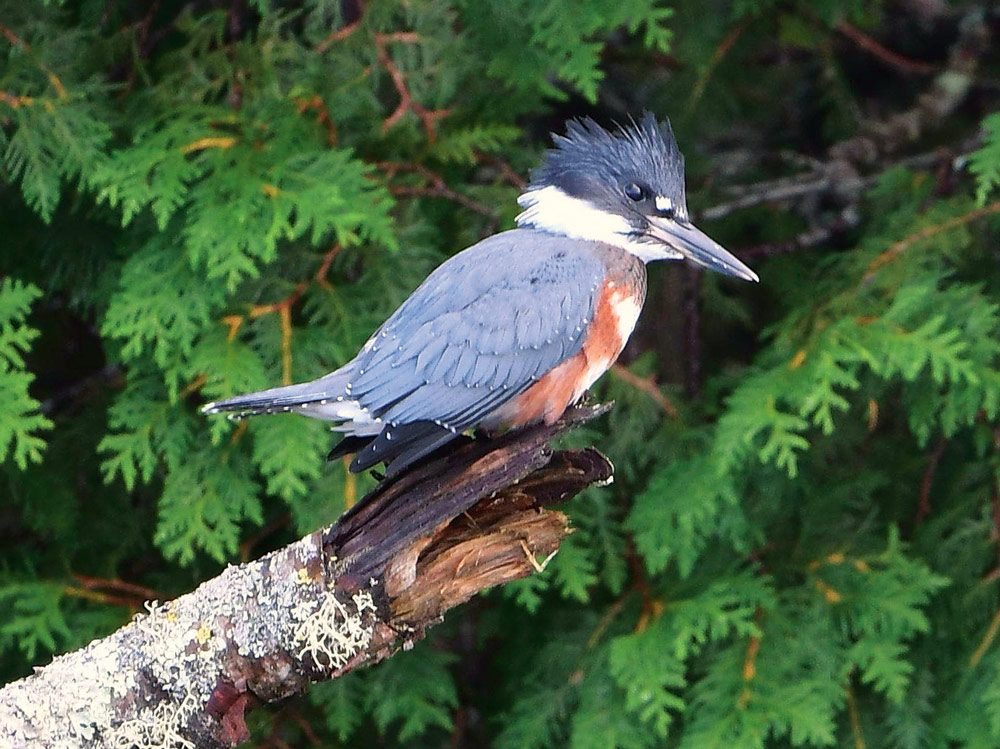
Capturing natural behaviour
The bird life in the area consists of mallards, loons, mergansers, blue jays, gray jays, great blue herons, Canada geese, kingfishers—which are difficult to photograph—and cedar waxwings, as well as a variety of woodpeckers, swallows, American bitterns and the occasional predator, such as an osprey or hawk. In terms of mammals, the list includes beavers, fox, deer, minks, weasels, groundhogs and the more elusive moose and black bears. Other creatures to observe include butterflies, a variety of colourful flying insects and snakes.
Viewing and photographing from a kayak has the unique advantage of being very quiet, plus you’re at eye level with the water. This allows you to capture natural behaviour as it unfolds in front of you.
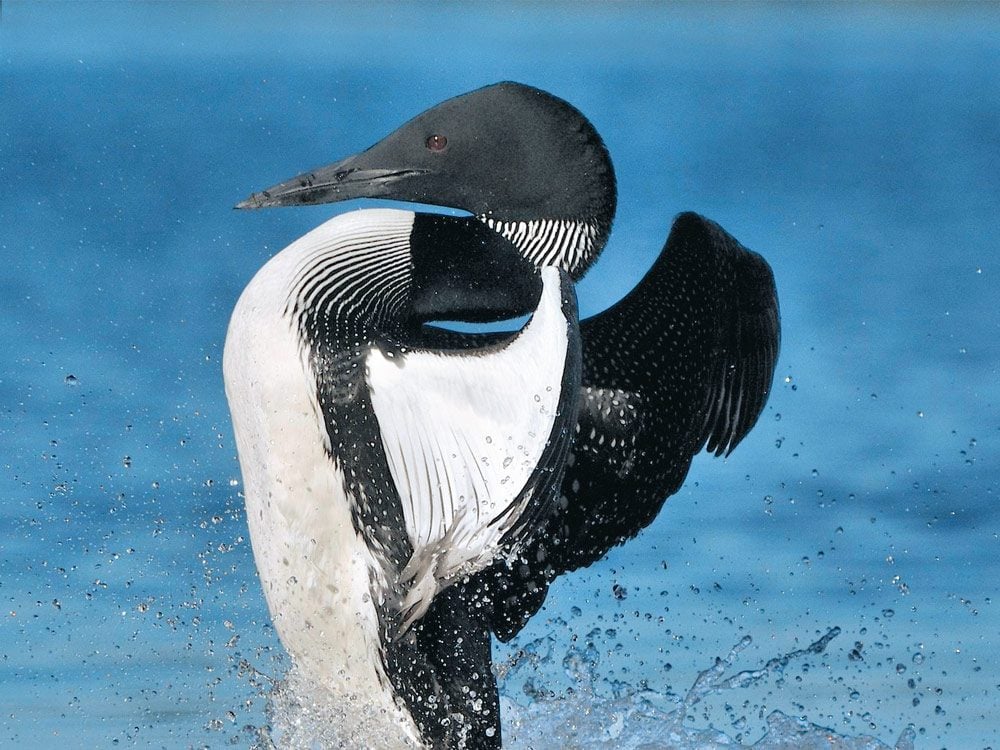
Dancing on the water
One of the more incredible sights I witnessed was when a visiting loon came to an area where there was already a family of loons living, including two young ones. The adult loons prompted the babies to hide, which they did by heading to shore and making their bodies flush with the water, so they were hardly visible. The adults then swam over to greet the visitor. What started as a friendly gathering rapidly shifted as one of the adults made a series of aggressive dance-like moves toward the visitor who subsequently fled the area. The adults then swam back toward their young ones, which were suddenly visible again. It was a truly extraordinary scene!
Don’t miss this gorgeous guide to the birds of the Okanagan.
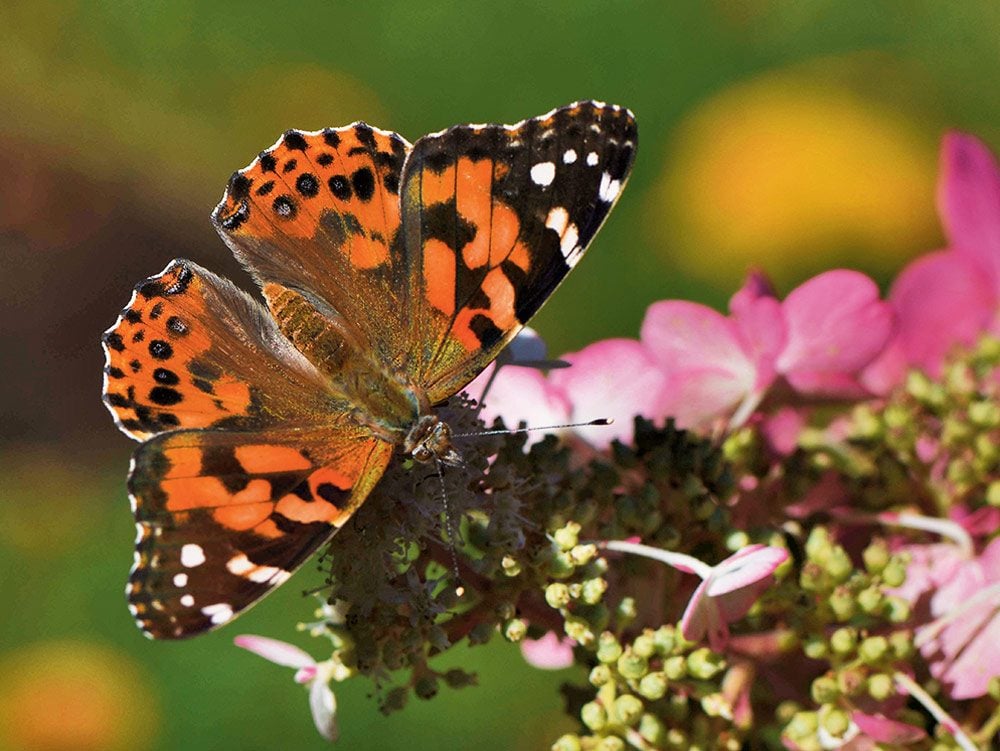
A remarkable display
Other opportunities to see natural behaviour are everywhere as long as you have the patience to seek them out and wait for events to unfold. For example, in all these years, I had never before seen a mallard eat a frog. I never even knew they did that. Then one day, I saw a duck moving its head furiously. As I moved closer, my camera at the ready, I noticed that the mallard was struggling with a frog. Though difficult to watch at times, it was a remarkable display of the life cycle in the natural world.
For the most part, I believe people are respectful of nature. Occasionally, nature becomes curious about their strange-looking neighbours, we humans. One morning as I was kayaking, a duck began swimming toward me. Normally, it would do a swim-by and keep moving, but on this morning, it jumped up onto the front of my kayak! At first, I thought it would jump right back into the water, but it didn’t. It was very curious and stayed for a while, admiring its new vantage point. Then it suddenly decided it had had enough and preferred swimming to kayaking.
Here’s more incredible Canadian bird photography.
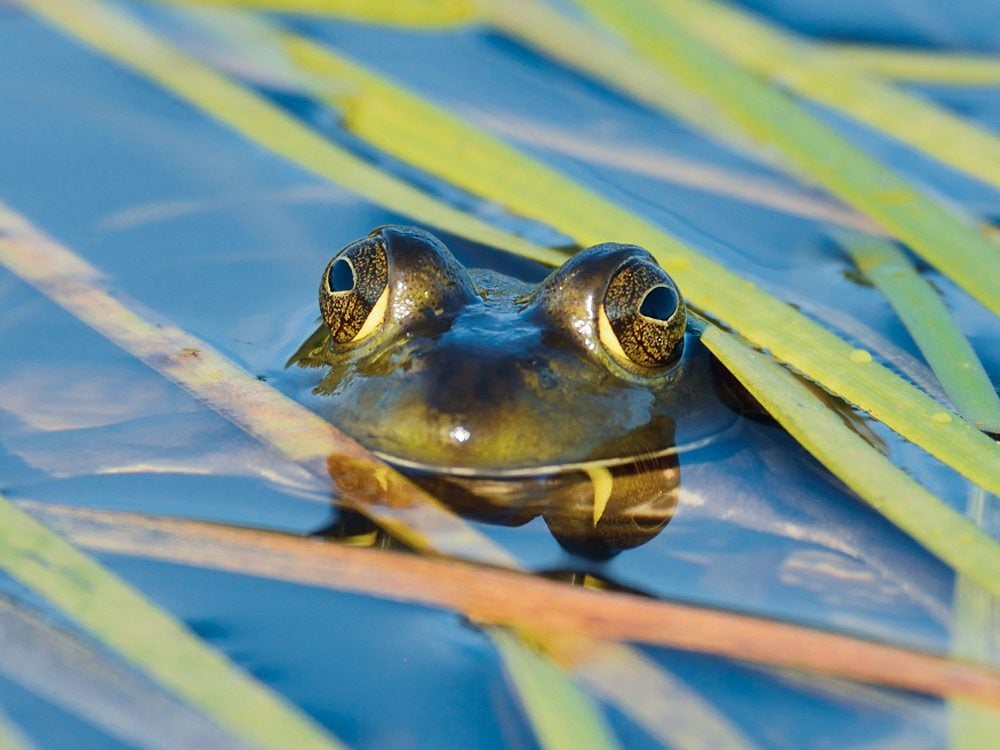
Time to head out and explore!
While it’s true that there are some far-flung locations with higher concentrations of wildlife, some very exotic, Canadians are blessed to have access to an amazing variety of wildlife wherever you live. If you don’t know where to go, an Internet search is the best way to discover areas to explore. Try looking for a local bird-watching club—not merely for birds but for areas where other wildlife tends to congregate, a photography club or any other special interest group.
Please take some time to head out and explore, breathe in the fresh air and discover the type of nature that makes you feel good inside.
Next, check out the best bird-watching spots across Canada.